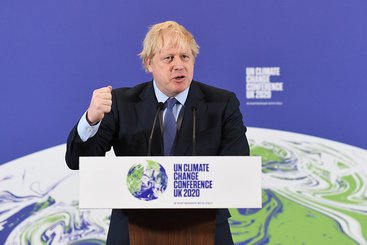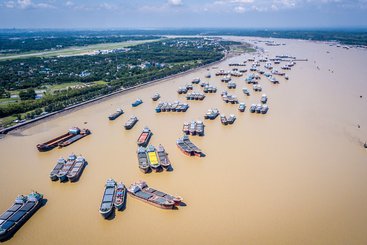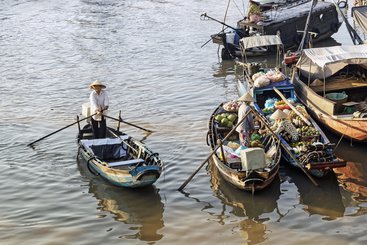International trade can accelerate decarbonisation by facilitating greater access to clean technologies and greener supply chains. But the climate and trade multilateral policy platforms must better support these processes. The United Nations Framework Convention on Climate Change (UNFCCC) and World Trade Organization (WTO) agendas need to be more coordinated. As COP26 gets under way, we consider perspectives from the ‘Least Developed Countries’ (LDC) Group, as well as African countries seeking resilient recoveries.
The WTO can do more to address the climate emergency
Some of the main links between the climate and trade regimes are beginning to be considered by WTO members. There has been an increased focus on environmental issues over the last few years, as reflected in particular by the Trade and Environmental Sustainability Structured Discussions (TESSD). This now counts around 55 members, including a number of LDCs. But discussions must be much more explicit about the climate emergency.
Trade must support adaptation, which is so crucial for the LDCs, as well as mitigation – where this is an LDC objective. For example, while members are discussing labelling issues in relation to sustainability – which are of course important – we can’t shy away from the need to account for carbon. This features high on the UNFCCC negotiators agendas, to ensure environmental integrity and to secure agreement on the creation of appropriate monitoring, reporting and verification frameworks.
Unfortunately, the discussions on Carbon Border Adjustment Measures (CBAM) at the WTO don’t always make links to the multilateral framework for international carbon markets – where much remains to be concluded under Article 6 under the UNFCCC process and COP26 negotiations.
Carbon accounting in low-income countries
Some LDCs will be affected by the EU’’s planned CBAM. In Mozambique, aluminium accounts for around 20% of total merchandise exports and almost 70% of total merchandise exports to the EU. LDCs are not currently exempt in the EU proposals. They will need a lot of support to set up accounting schemes for emissions. In short, they will need assistance for carbon accounting related to trade.
This could come through Aid for Trade (AfT). Discussions about how AfT can mainstream climate action are ongoing, but we don’t yet have a conceptual framework to integrate these considerations. LDCs and forthcoming graduates need support to adapt to the changing trade landscape which will be influenced by climate change: both its physical and regulatory effects. There is much to do to ensure greater alignment between climate and trade policy for LDCs and forthcoming graduates.
Aligning trade and climate change objectives through recovery plans: towards a green recovery in Africa
The recovery plans offer opportunity for reflection on how to streamline climate action building on trade. For African LDCs for example, the African Green Recovery Action Plan and African Green Stimulus Programme can frame the trajectories of the recovery plans towards more resilience. Both include specific objectives regarding climate finance, climate smart agriculture, resilient cities and nature-based solutions to support the economic recoveries. All these levers have links to trade policy, not only within the African Continental Free Trade Area, but also at the multilateral level.
Given climate change effects on the productive structures and economic base of African LDCs, economic recovery funds must ensure recovery, trade and climate change objectives are aligned. While this has so far been limited, talks at COP26 will deal with several points at the intersection of these three agendas: recovery, trade and climate.





